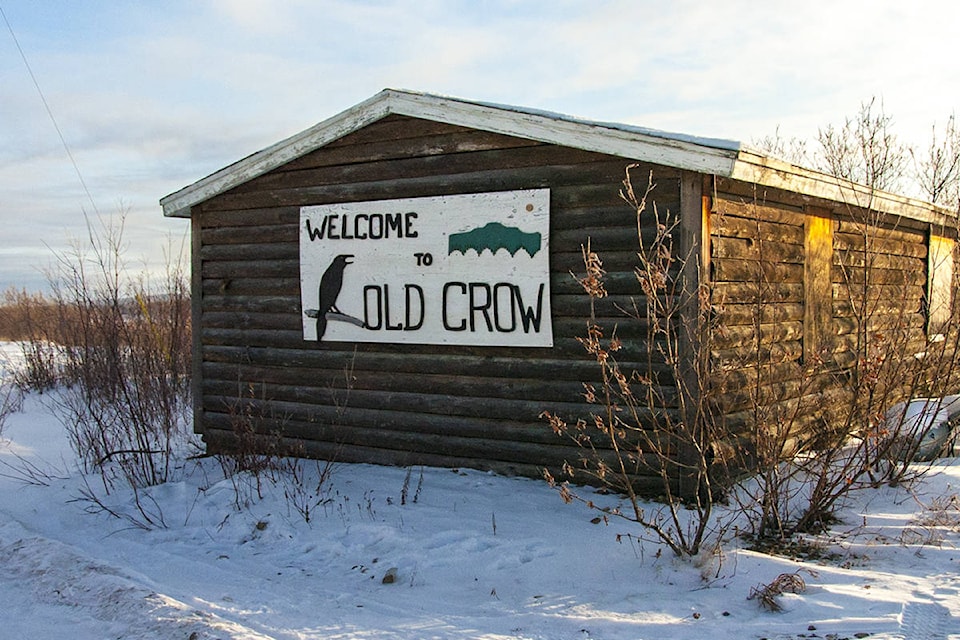By Rhiannon Russell
For 13 years, Sophia Flather studied French in an immersion program in Whitehorse.
“I did love learning it, but I always felt a little bit resentful that I couldn’t learn my own language,” says Flather, a member of the Vuntut Gwitchin First Nation. “It’s just not accessible to study your own language with the same rigour as you can French or English.”
Her parents both spoke a few Gwich’in words at home, but Flather wanted to learn more. So in high school, she took Gwich’in classes at F. H. Collins Secondary School.
“I wouldn’t say that those courses were expected to get me fluent or anything,” she says. “They were more just to have some language and some culture.”
So when Flather heard about a new method of language instruction, called direct acquisition, being used to teach Tlingit, a language spoken in Carcross, Teslin, Atlin, B.C., and Alaska, she was intrigued.
The method was developed at the Salish School of Spokane in Washington to teach Nsyilxcn, an Indigenous language.
K’èdukà Jack, a member of the Taku River Tlingit First Nation, along with Nsyilxcn speaker and language teacher Michele K. Johnson, received funding from the federal Aboriginal Languages Initiative to develop the program in Tlingit.
Flather’s sister, who was working at the Council of Yukon First Nations at the time, took Jack’s course and afterwards, knew more Tlingit than she did Gwich’in.
Flather says her sister talked to the Vuntut Gwitchin’s heritage resources branch about the model, and the First Nation decided to fund such instruction in Gwich’in. Classes are scheduled to begin in October, and are open to any Gwich’in adults.
Flather, who is working as the project’s language coordinator, reached out to Jack for mentorship and training.
“The differences between this method and other methods … is that learners are empowered right away to become teachers, are given the tools (i.e. lesson plans, teaching manuals, and teacher training) to learn while teaching,” Johnson writes in a 2016 paper published in the journal Language Documentation and Conservation.
It’s an intensive immersion program, involving a lot of repetition. A unique part of the model is that teachers don’t need to be fluent.
“Many critically endangered language revitalization efforts need techniques which support learners to learn while they themselves are teaching,” writes Johnson.
In 2011, there were just 370 mother-tongue Gwich’in speakers, according to Statistics Canada. Flather, who moved to Old Crow three years ago, says many people there know a few words in Gwich’in, but it’s mainly the elders who are fluent.
“When you’re working with your elders and you understand that our languages are dying, essentially, it can be really stressful,” says Jack. “There really has to be one young, passionate individual in each community who’s willing to take that (revitalization) on. It’s a big commitment.”
It’s her dream that this happens in First Nations communities across the territory—“Sophia is literally my dream,” Jack says.
Over the past several months, Flather has been preparing materials for the classroom: translating English words and sentences from the method’s six textbooks into Gwich’in, working with elders who review and edit her work, and pouring over a noun dictionary put together by the Gwich’in Cultural Society.
There’s one textbook per module, each one building upon the last.
“We record all the words and the sentences in the textbook so if you’re not fully confident in the language yet, you can still teach it in the classroom,” Flather says. The recordings — of local elders saying various words — serve as a reference for pronunciation.
Flather, for instance, isn’t fluent, but she’ll be one of the teachers in the fall. She hopes to recruit other teachers in the community as well.
Children study Gwich’in for 40 minutes each day in school, but there haven’t been classes for adults in Old Crow for a few years, Flather says. The classes this fall will be offered one day per week, for six hours a day, for 16 or 17 weeks.
Adults are the target demographic for a reason. As Johnson puts it in her paper: “Many Indigenous languages are critically endangered and faced with the urgent need to create parent-aged advanced speakers.”
Ideally, parents in Old Crow will take the class, then be able to raise their children with the language.
“A lot of people think we’re going to start with kids and youth, but just focusing on youth, I think, doesn’t often work because then they need someone to speak to in different environments other than school,” says Flather. “The home is the biggest thing, I think, and also working environments.”
The first textbook, which will be taught in the fall, focuses on vocabulary and expanding students’ knowledge to 500 words. For example, they’ll learn the terms for various types of food, like pemmican, dried meat, and carrots—ch’itsùh, nilii gaii, and gwanzhih. They’ll also learn basic sentence construction. For instance, “Ch’itsùh ih’aa” means “I am eating pemmican.”
“A big part of this is to create a really safe environment, so just making sure we’re supporting each other, we’re not correcting each other, we’re not laughing at how people pronounce things,” Flather says.
Her goal is to see the program grow over time. She hopes people in the community will get excited about the opportunity to learn Gwich’in, like she does.
“I love learning and I love language,” she says. “Any speaker created is amazing to me.”
Jack adds that many First Nations in the Yukon have language funding. “I’m really hoping that the different First Nations are willing to take this on and that this is going to become a movement that’ll just get stronger and stronger.”
She says she’s willing to help any other First Nations people in the territory who are interested in learning more about the model and language revitalization.
Contact Yukon News at editor@yukon-news.com
